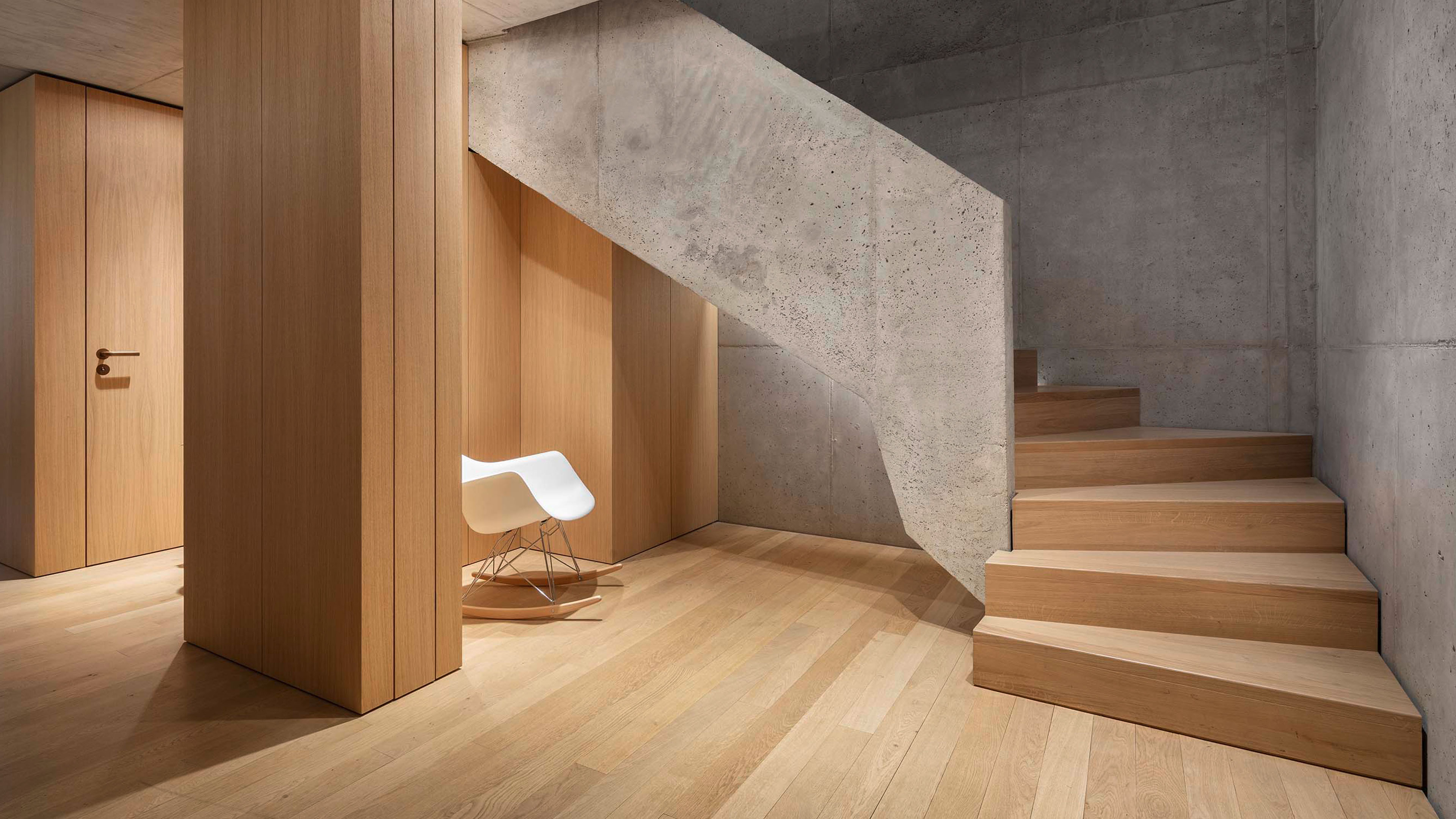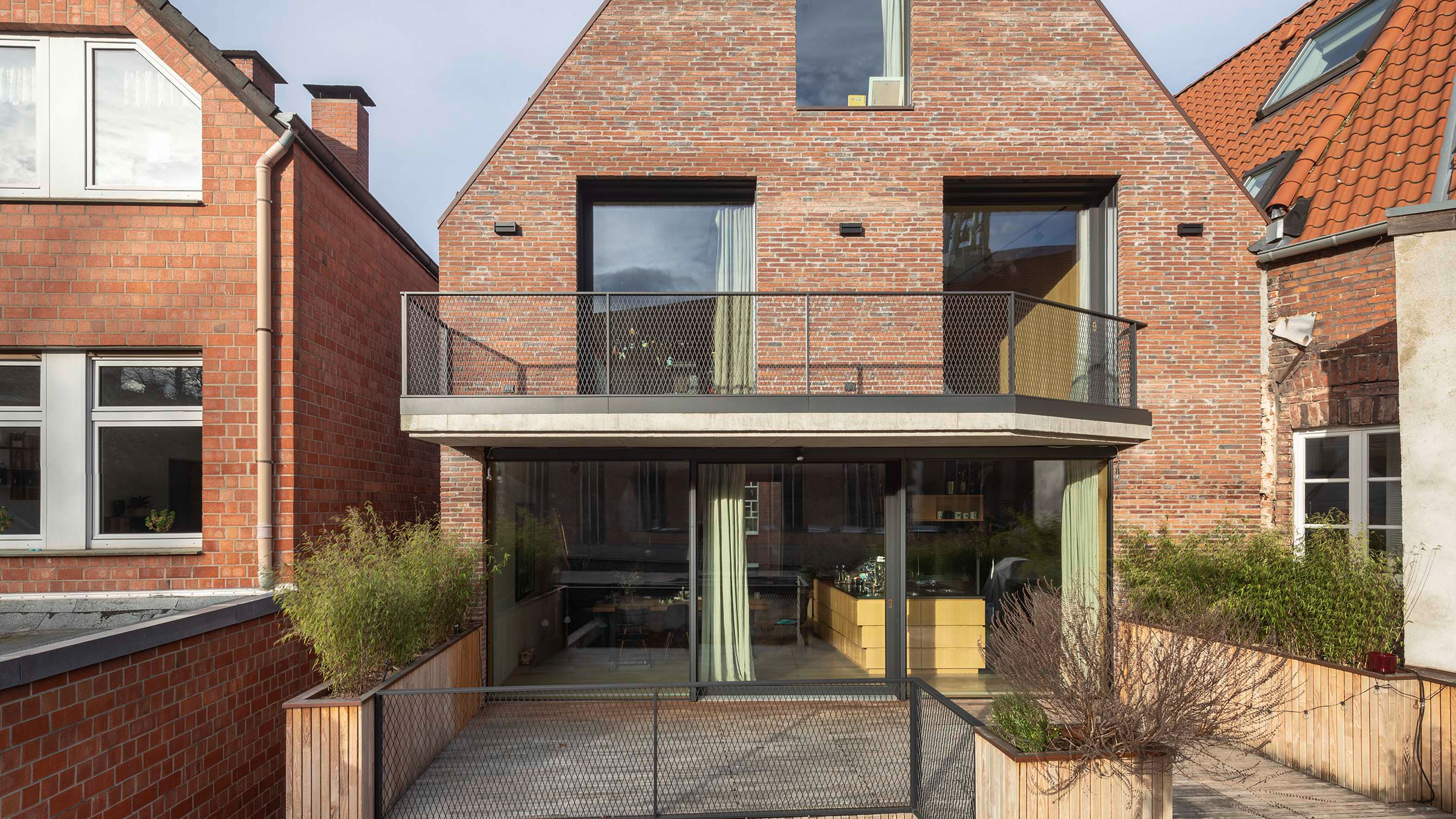House on Budden Tower, Münster
hehnpohl architektur

Produkte
British architect John Pawson subtly revises an iconic Modernist handle – the ‘Reich Shape’ handle by Hans Poelzig – quietly breath ing new life into this familiar form. Fabricated in classic bronze, Pawson’s meticulously proportioned design reworks the oval cross-section to produce a handle that is comfortable in the hand and pleasing to the eye – the latest expression of an idea that has been repeatedly modified over the course of nearly a century.

As if it had always stood there
Architects from the hehnpohl architektur practice have put the blueprint for a house to effect near the promenade on the former city fortifications around the old heart of Münster that, with its radically purist formal idiom, blends in almost organically with the existing stock whilst also being thrillingly modern. The House on Budden Tower stands on Buddenstraße flanked by a row of period gable-roofed houses. The new building is clearly aligned with its older neighbours in architectural terms and, like them, adheres to the very prototype of a house.
The coal-fired, hand-moulded bricks selected for the façade add to the way the building chimes in with Münster’s architectural core. A large window on the first floor affords a view of the eponymous Budden Tower, whose circular brick façade is one of the few visible remains of Münster’s former city fortifications from the 12th century. The architects set store by the façade’s honest, artisanal appearance. All the bricks from the annular-kiln firing, for instance, were deemed suitable for use. Once the bricks had been pointed, the façade was merely brushed clean with a broom so as not to obliterate traces of the artisanal input involved.
Making things seem easy that are, in fact, anything but easy is one of the fundamental objectives pursued by the young architectural practice from Münster, and one they have managed to achieve with aplomb in their House on Budden Tower. They have created modern architecture pared down to the bare essentials whose restraint nevertheless makes it seem as if it had always stood there.
Architects and building
Photo: ©Kopfkunst-Metzdorf
“The house is of an appearance that draws on historical shapes”, architect Christian Pohl explains, “yet is contemporary in design and the craftsmanship that went into its execution is plain to see.”
A house with three alignments
The design motif for the façade derives from factors specific to the site. Three different plot alignments converge here and are echoed by three skewed planes in the façade that protrude to an ever-greater degree from floor to floor. The three lines come to a point on the lefthand edge of the house, giving it the impression of fanning out from the side. By dint of its staggered structure, the façade also constitutes a contemporary transformation of its period counterparts to either side, whose traditional floor divisions and rendered basements make the fact that they are three-storey buildings more readily discernible to the onlooker.
The distinctive atmosphere in the internal spaces has been brought about by focusing on two materials – timber and fair-faced concrete – and making canny use of daylight. The concrete was shuttered on site and applied in the crude state without any postprocessing. Joints and craft-related discrepancies lend the building a sculptural quality as a result that almost gives it the status of an art object. Oak flooring which has merely been oiled makes for a sense of contrast that imbues the spaces with a domestic feel. Roof glazing elements placed unusually but to good effect against the eaves and in the ridge area cause indirect daylight to penetrate deep inside the house.
It was decided to use the FSB 1242 handle model for the windows and doors. The “Reich-shape” lever handle by Hans Poelzig, which the British architect John Pawson reworked for FSB and opted to have produced in Bronze, is of a simplicity that is well-nigh poetic, he feels. The handles in the House on Budden Tower boast an optically variable matt Bronze finish that seamlessly accords with the concept of material honesty that hehnpohl architektur espouse. “The material simply exudes dignity”, the architects themselves enthuse, “and at the same time, despite being a ‘cold’ metal, it is a joy to take hold of.”. The model’s formal clarity and suffused edges reinforce the overall impact of the interior spaces and bring material and form into harmonious accord. The architects have already garnered a variety of prizes for their felicitously conceived work, including the 2019 Houses of the Year Award and that for the “Building in a Historical Context” category in the German Brick Prize awards.
Building details
Photos: Roland Borgmann












